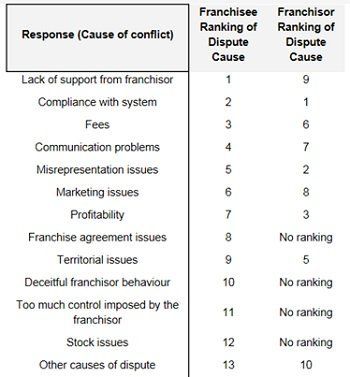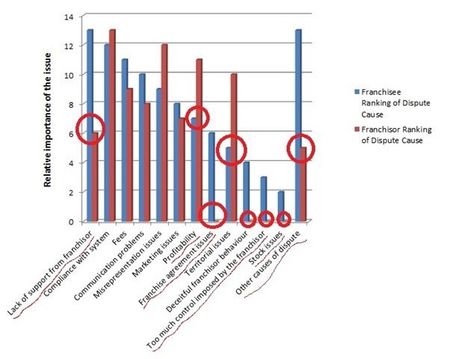One in five franchises is involved in some kind of dispute with franchisees, according to recent surveys in Australia and New Zealand. But what is the true state of conflict and resolution in franchising? And more importantly, what can be done to resolve or even prevent conflict? Massey University is holding a seminar next month entitled “Conflict and Resolution in the Franchise Sector: Evidence from New Zealand and Australia”. We’ve been invited to sit on the seminar’s Expert Panel, so we thought we’d start throwing out a series of idea-starters leading up to the seminar.
Is conflict inevitable in the very nature of franchising?
Some would argue that the economics of franchising make conflict inevitable. Franchisors and franchisees make money in different ways, and tension is naturally created because the franchisor makes more money when franchisees generate more revenue, but the franchisees don’t necessarily make more money when they generate more revenue, and the money they make is limited by the money they have to pay to the franchisor in the form of royalties.
This tension won’t necessarily lead to conflict – but only if there is a balance between the franchisees’ profitability and the franchisors’ royalties. When that changes – for example, when fast food franchisees are required by their franchisor to extend their opening hours and therefore their costs without a corresponding increase in revenues at first – the tension can quickly turn into conflict.
Where are the other pressure points in franchising?
There are plenty of other tensions in franchising just as there are in any relationship. Here are the primary tensions which Australian franchisors and franchisees say have led to conflicts:

Franchisee versus Franchisor ranking of Dispute Causes
Compiled from: Towards Conflict Resolution Australian Survey 2009 (Griffith University), and Franchising Australia Survey 2010 (Griffith University)
As you can see, franchisees and franchisors have quite different perceptions of the relative importance of these tensions. It is our view that the tensions which are most likely to turn into conflicts, especially conflicts for which the likelihood of satisfactory resolution is lowest, are those where the difference in these perceptions is the greatest. We term these “pressure points”.
The pressure points become obvious when we graph the data from the chart below:

Understanding these pressure points, tensions in the franchising relationship can be reduced and unresolvable conflicts prevented in many cases.
My name is Robin La Pere of No Ordinary Consultants and during my years in the franchising industry, I have seen enough conflict to make it seem that it is an inevitable part of franchising, just as it is in other long-term relationships.
But is it inevitable? Can the franchise relationship be managed to the point that conflict is eliminated. In this article, I look at some of the "pressure points" so that these can be understood and, hopefully, minimised.
Often a third-party can be helpful in resolving franchise conflict, and often it takes the involvement of an outsider to identify simmering pressure points in a franchise.
If you'd like some help in improving your franchisee relationships, contact me
for a free Initial Consultation.
Relevant Articles
A major strength of franchising is that it’s based on tried and true business models. Trouble is, in this fast-changing business environment, what’s tried and true one year may be tired or irrelevant the next.
Not surprisingly, one out of three franchisors is concerned about the viability of their business model.
The 'Business Model Canvas' has emerged as a powerful tool for developing and updating business models. Recognising that franchise businesses differ in several ways from other business types, I have come up with a new version of the Business Model Canvas designed specifically for franchises.
Send me your email and I'll email you my e-book The Business Model Canvas for Franchisors:




